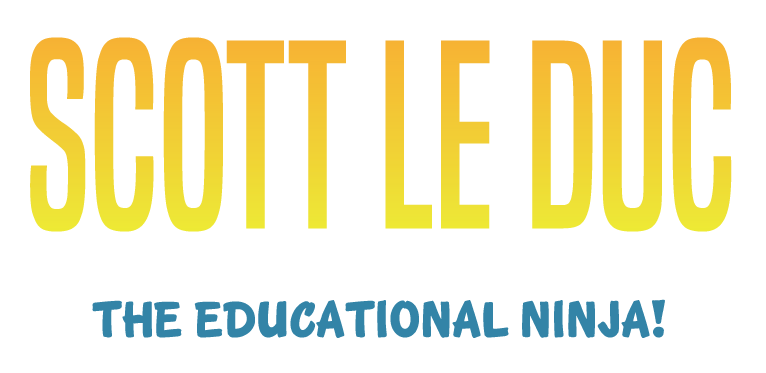Scott’s presentation Google Slides
Getting to Know Your Students and Their WHY: Student Personality Cards

Before you start this project make sure you have…
- Created an account at Edublogs.org. You will be using your blog to ‘turn in’ student work.
- Use Mr. Le Duc’s invite code: https://edublogs.org/?join-invite-code=7754077-mrleduc
- Create a site title and URL, pick what you want just don’t use your last name
- Review examples of blog URL’s and usernames: hellokitty.edublogs.org or summerschoolrocks.edublogs.org

- Watch this nice tutorial to help you understand how it works: https://www.youtube.com/watch?v=fv0aKypLi4Q
- You can also review help.edublogs.org/getting-started-with-edublogs/
- I will train you in more detail about blogging later.
- Just make the account now.
- Emailed Mr. Le Duc, scott.leduc@tumwater.k12.wa.us, your Edublogs.org web address like hellokitty.edublogs.org
- Rejoice! You now have the beginning of a professional portfolio!
This project will take you about 75 minutes to complete – maybe less …
Watch the Project Summary Video (9:31 minutes)
- Below are a series of steps for you to make a personality card. This card will help the teacher build the course and tailor the content to your personal and professional goals. It is the most important project of the course.
- Record the information from each step (write it down, take a picture of it, etc.)
- You will need it to make your card with an online cardmaker
- You will need it to fill in the student information survey in step 10 below
1. Watch Know Your WHY by Michael Jr. (3:49 minutes)
2. Write a few things that define your WHY (about 3 minutes)
- We will use these to help build the course around your WHY’s
- If you do not write your WHYs, we cannot start the class, as we will have no PURPOSE for the class
- You will add these to the class survey, linked at the bottom of this project
3. Take These 3 Surveys/Quizzes (about 20 minutes)
Survey/Quiz Links
Help reveal elements of your Personality Type and things about you based on Shapes
- Myers-Briggs Personality Type Quiz
- If you want to, explore more about the communication styles at humanmetrics.com website
- Shape Theory Test
- Pick your favorite 3 shapes, don’t think too hard, just look at them and decide which is your favorite, second favorite, and third favorite
4. Record Information From Surveys/Quizzes (For the Survey and Card)
- From the Myers-Briggs Quiz, an ENTJ example is included below

- Take a screenshot on a Mac
- Hold down these three keys on a Mac: COMMAND + SHIFT + 4 then drag over the area you want to take a screenshot picture of on the desktop with the mouse
- This will give you a picture of your survey results on the desktop
5. Determine your Brain Type According to Cajun Koi Academy
Optional: Watch 3 Motivation Styles Determined by Personality
6. Pick a Career Pathway That Interests You (about 10 minutes)

- Review the CreativeSkillSet.org
- Choose a career path that seems interesting to you NOW, you can change your mind anytime!
- Write a few things that you found interesting
- Also, review your personality type career page
- Click on the link below and replace the four letters ‘ENTJ’ with your four letters and reload the page
- http://www.humanmetrics.com/personality/ENTJ-careers
- The information can be helpful!

7. Fill in The Student Information Survey (about 10 minutes)
8. Take a Picture of Yourself (It will not be published publically) (about 5 minutes)
- Face a window in your home
- Have the light from outside illuminate your face
- Daylight is very flattering for skin tones
- Crop the picture in horizontal / portrait mode (wider than taller)
- Fill the frame with your face, get close to the camera/phone/etc.
- Hold steady and take a few shots to pick your favorite
- You will need this image on the computer you are making the personality card
9. Watch One of the Pokemon/Magic/YuGiOh/TradingCard Screencast Tutorials (about 3-4 minutes)
Pick the type of card you would like to make (Pokemon, Magic, or YuGiOh) and watch that video tutorial below
Pokemon and Magic Card Tutorial
YuGiOh Card Tutorial
10. Copy the survey/quiz results into https://magic.falseblue.com/create template. (about 10 minutes)
Include:
- First, last name, pronouns (How you want to be addressed in class)
- Picture of yourself
- 4 Myers-Briggs (INTJ-like stuff) categories and their percentage
- Top 3 favorite shapes (Square, Triangle, Rectangle, Circle, Squiggly)
- Your motivational style; air, fire, or earth
- Some career choices, at this point in time
- Some hobbies you have
Open the image below in a new tab to guide you with filling in the card maker fields

11. Save Your Card to Your Desktop and Email to Mr. Le Duc (about 3 minutes)
- Click and drag the finished card from the CardMaker Web Site to your desktop
- Rename the image of your card with your last name and place it in the class folder or email it to Mr. Le Duc
- Mr. Le Duc’s Olympia email address: sleduc@osd.wednet.edu
12. Celebrate! (take your time and enjoy!)
- You have just finished the most important assignment for the class!
Alternative Paper-based Option with Student Pictures
- Take student pictures
- Print the pictures out with the template below printed on the back of each picture
- Have students fill in as you work through the topics

Bonus Resource: Kagan Differentiation Numbers
Read this article about grouping students for best peer and teacher support
Sunday Sessions with Scott Le Duc

Scott’s August 7th, 2022 Summer Conference material is posted below.
Evaluate Scott’s Summer Conference Sessions
- Give feedback on the session Content and Process
- Fill in Scott’s Conference Session Evaluation Form
Contribute to the Pre-session and TPEP Survey
- Take the Presentation / Session TPEP Prioritization Agenda Survey
- These are standards-based presentations/sessions
- Gathering data from students/teachers can help you prioritize the most engaging content
Add Your Ideas to Our Padlet Board
Fill in a TPEP Bingo Card for This Workshop

Session Details
Getting To Know Your Students and Students Getting to Know Themselves

The better we know our students the better they perform in class. Share some simple, effective ways to get to know your students and how they can learn more about themselves. We will cover strategies to learn names, honor cultural diversity, use Myers-Briggs, fun-related personality inventories, student goals setting for the course and tracking relevant data, knowing their ‘why’, and more.
Resources
- Take student pictures, have them write about themselves on the back, and memorize all their names over the first weekend. – Use the Leitner System or watch this video
- Student Personality Survey and Cards
- Autonomy, Mastery, and Purpose Video by Daniel Pink
- How to Maximize Dopamine & Motivation – Andrew Huberman Video
Building and Managing Class Rituals and Structure

Humans are habits. Ok, I know we are much more than a bunch of patterns, but well-planned daily rituals or habits help students spend less cognitive and emotional energy on the ‘what’ of the class so they can spend it on the ‘how.’ We will explore strategies that work to help students manage the class and themselves.
Resources
- Who Cares? – Why Deming and Quality in Education
- I do, we do, you do…
- The art and science of setting timers, goal setting, intention, social-emotional health, creativity, and respect
- Scrum
- Project Tracking Sheet
- Production Project Feedback Form .v3.pdf (Paper handout)
- Production Project Blog Template (Edublogs)
- Advisory ‘Session’ Schedule for 2022-23
Student Self-Management: Problem-solving, and Portfolio Building

Getting Things Done is David Allen’s process for getting more stuff done and being more in the moment. Most students are not good at managing their time or themselves. They need our help. Learn about David Allen’s process integrated into student planning, workflow, and class structure.
Resources
- Session Production Project Blog Post Form
- Production Project Blog Template (Edublogs)
- Example Film Team Forms (Who does what when)
- Edublogs.org – Free add-free student blogs or for a $40 fee you can have teacher management options
- Feedly.com – A free media reader that Scott uses to read student blogs
- Scott Le Duc’s Blog Templates at Edublogs
- Linkedin Profiles
- Linkedin Recommendations
- Project Tracking Sheet
Production Workflow, Project Management, Standards, and Frameworks

We build backward in this session. We examine standards, frameworks, units, lessons, and activities looking for a throughline of the ‘what’, ‘why’, and ‘how’ of our day-to-day work. Continuity, measurability, and student tracking and assessment of their own progress is the aim. This is gonna be fun!
Resources
- Project Tracking Sheet
- State Reporting Spreadsheet Example
- Enlightened Employment Spreadsheet
- Advisory ‘Session’ Schedule for 2022-23
- Session Production Project Blog Post Resources
- Production Project Feedback Form .v3.pdf (Paper handout)
- Production Project Blog Template (Edublogs)
- Example Film Team Forms (Who does what when)
Growing an Advisory Committee and Integrating it into the Classroom



Our advisory members are in our classes regularly. They conduct workshops. They are presenters. They are also present as an advisory panel giving feedback on student work throughout the year. They get to know the students and add an incredible amount of legitimacy and excitement to the day-to-day work. Find out more.
Resources
- Scott’s Advisory Page
- Advisory ‘Session’ Schedule for 2022-23
- Eric and James in meeting minutes
- James in the classroom
- Eric in the classroom
- Feedback Forms and Slide Template for Session Presentations Preparation
- Task Time Team Form (PDF)
- Session Slideshow Template (Google Slides)
In-Class Leadership, CTSOs, and Competitions

Setting up competitions to focus student effort is very rewarding. Scaffolding skills toward a goal really motivate students. Establishing in-class leadership helps guide the class and keep activities focused on what students are most interested in. See some strategies with our own game design, film, animation, and sound/music CTSO based on AMES.team. Our approach is similar to SkillsUSA and other CTSOs.
Resources
Getting Things Done

Presentation Summary
Students are overwhelmed. Maybe you are too? David Allen’s Getting Things Done or GTD process has helped millions of people be more efficient and less stressed out for over 10 years. Students can use free and accessible tools to help get stuff out of their heads and into their own ‘trusted system’. It’s essentially an enhanced to-do list system. This can help students manage class material better and all their other school and life stuff, as well. It works wonders!
Pre-session Survey
- Ask me a question with Google Forms
- Add to our Dotstorming Wall
- What would you like to learn from this workshop?
Post-session Survey
- Please fill in the What Works and What Doesn’t Google Form
- Here is another version of the Teacher Feedback Form
- This will help improve these workshops – THANKS!
Learning Resources
- Procrastination – 7 Steps to Cure (YouTube)
- GTD Workflow Image (Image)
- The Art of Stress-Free Productivity: David Allen (YouTube) – INTRODUCTION TO GTD THEORY
- Getting Things Done (GTD) by David Allen – Animated Book Summary And Review (YouTube)
- Avoid This BIG Beginner Mistake with GTD (YouTube) – STRATEGIES
- Scott’s GTD Bookmarks at Diigo.com
- Scott’s GTD YouTube Playlist
- Google Keep and Other Google Tools Options for GTD
- Using Google Keep in your Getting Things Done workflow (YouTube) – Simple Overview of GTD Basics and use of Google Keep for Capture Process
- Set up Google Keep for your GTD workflow (YouTube) – SIMPLE HOW TO
- Getting Things Done with Google Calendar, Keep, & Tasks (YouTube) – DETAILED HOW TO
- Watch from 19:20 to end to get the overview
- 5 Ways to Get More Out of Google Keep (App Tips & Tricks) (YouTube) – IDEAS
- Trello GTD Option
- How to Use TRELLO for Getting Things Done (GTD) (YouTube) – DETAILED HOW TO
- trello.com/en/pricing
- Evernote GTD Option
- Using Evernote with Getting Things Done (YouTube) – DETAILED HOW TO
- evernote.com/compare-plans
- OmniFocus GTD Option
- OmniFocus + Getting Things Done (GTD) (YouTube) (Mac Only – $50-Standard or $100-Pro)
- Watch 0:00-3:00 and 5:00 to end
- store.omnigroup.com/omnifocus
- OmniFocus + Getting Things Done (GTD) (YouTube) (Mac Only – $50-Standard or $100-Pro)
- Workflowy Option
Tools
- Google Keep (Free with Google account)
- Trello Board GTD Template (Free with Trello account) – Scott uses this tool
- Paper Notebook or Journal ($1 to $20)
- OmniFocus (Mac Only – $50-Standard or $100-Pro) – Scott uses this tool
- Read more about how OmniFocus works with the GTD processinside.omnifocus.com/gtd-whitepaper
- Evernote (Free to start with upgrade purchase options)
Scott’s 2020 Remote Learning GTD Projects
- All Classes GTD Part 1 – Week 9
- Film Class GTD Part 2 – Week 10
- Film Class Updating Workflow – Week 11
- School of Rock Updating Workflow – Week 11
- Game Design Updating Workflow – Week 11
Contribute to the Pre-session and TPEP Survey

- Take the Presentation / Session TPEP Prioritization Agenda Survey
- This is a standards-based presentation/session
- Gathering data from students/teachers can help you prioritize the most engaging content
- Scott placed the TPEP standards which are based on the Danielson Model in a Google Form
- What would you like to learn from this session?
- What domains and components (Standards) would you like highlighted through this session?
- Data gathering is essential for tracking growth, help Scott differentiate the experience to your needs
Review Participant Data To Set Session Goals
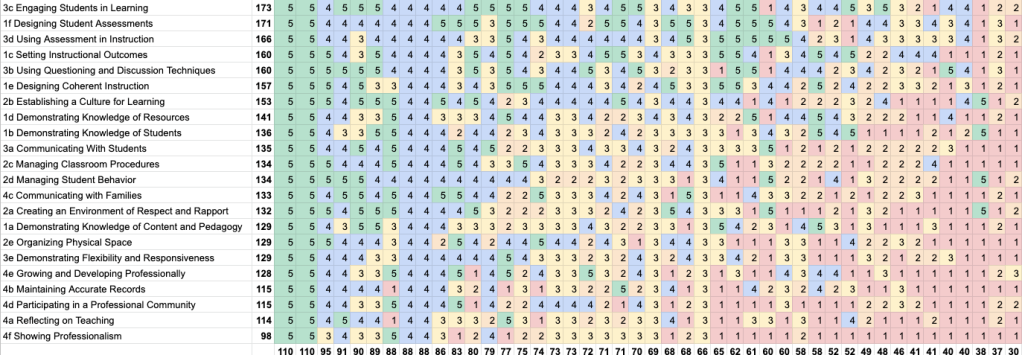
- Review the spreadsheet of data (Link is only for Scott to use live)
- Watch Scott’s Session Goal Setting with Data YouTube Tutorial
Top TPEP Requested Component…
- #1 is… 3c Engaging Student Learners (Danielson description PDF), example student behaviors below:
- Students take the initiative to improve the lesson by (1) modifying a learning task to make it more meaningful or relevant to their needs, (2) suggesting modifications to the grouping patterns used, and/or (3) suggesting modifications or additions to the materials being used.
- Students have an opportunity for reflection and closure on the lesson to consolidate their understanding.
- Students are asked to write an essay in the style of Hemingway and to describe which aspects of his style they have incorporated.
- Students determine which of several tools—e.g., a protractor, spreadsheet, or graphing calculator—would be most suitable to solve a math problem.
- A student asks whether they might remain in their small groups to complete another section of the activity, rather than work independently.
- Students identify or create their own learning materials.
- Students summarize their learning from the lesson.
Post to Our Session Parking Lot

- A Padlet parking lot is a great place for students/teachers to post ideas asynchronously
- This Workshop’s Parking Lot link: https://bit.ly/PadletParkingLot
- This Workshop’s Parking Lot QR Code: (Padlet generates one automatically)

Play Bingo – sort of…
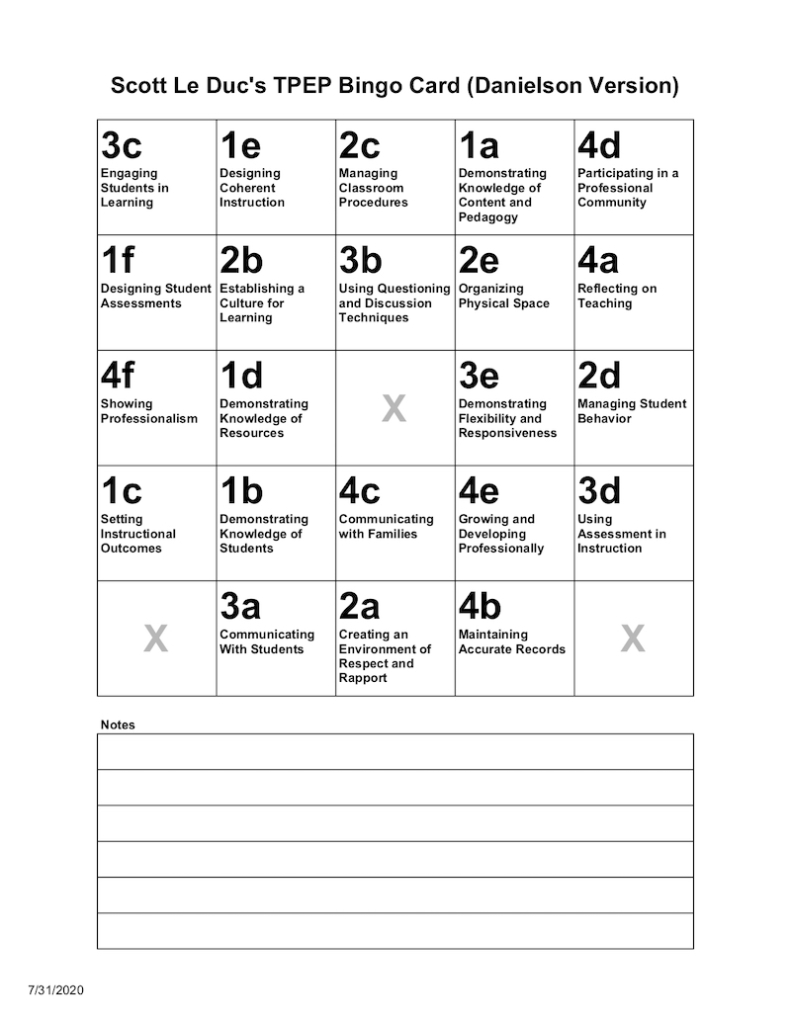
- SIMPLE TPEP Bingo Card – Danielson (above) (PDF)
- DETAILED TPEP Bingo Card – Danielson (has the State 8) (PDF)
- Playing bingo with standards is a great way to activate the gaming mentality in students/teachers – get them looking, and searching in your curriculum – doing is learning!
Contribute to the 21st Century Skills Treasure Hunt

- Gather ideas for 21st Century Skills structure and process through students building and presenting presentations collaboratively
- Add your ideas to your TPEP Bingo Card or Our Session Padlet Parking Lot
- Research 21st Century Skills
Endure Scott Le Duc’s Introduction

- Decide whether he is credible, or not
- Started teaching CTE Arts and Technology in 1996 at Capital High School in Olympia, WA
- Achieved National Board Certification in CTE (2014)
- Selected as one of the top presenters at numerous CTE conferences
- He stuffed the ballot box! – shhh…
- Can moonwalk and touch his tongue to his nose
- Known to be a nice guy, occasionally
Contemplate Scott’s Presentation Goal

Designed with Andragogy for the ADULT Mind
- Need to know: Adults need to know the reason for learning something.
- Foundation: Experience (including error) provides the basis for learning activities.
- Self-concept: Adults need to be responsible for their decisions on education; and involvement in the planning and evaluation of their instruction.
- Readiness: Adults are most interested in learning subjects having immediate relevance to their work and/or personal lives.
- Orientation: Adult learning is problem-centered rather than content-oriented.
- Motivation: Adults respond better to internal versus external motivators.
Remember, Andragogy can be for Young ADULT Minds, too!

Infused with Bloom’s Taxonomy Verbs

- For a more detailed description of Bloom’s Taxonomy examine the Model Questions and Key Words PDF
- Examine 126 Bloom’s Taxonomy Verbs For Digital Learning
- Scott’s Rubric Builder (help Students Build Rubrics with Bloom’s Verbs)
- REDO – No evidence of standard
- LIST the stages and procedures used in the recording process. APPROACHING STANDARD
- DESCRIBE the stages and procedures used in the recording process. MEETS STANDARD
- DEMONSTRATE the stages and procedures used in the recording process. EXCEEDS STANDARD
Example of a Bloom verbs-based rubric where the ‘standard verb’ was ‘describe’ with the lower level verb was ‘list’ and higher level verb was ‘demonstrate’
Contemplate That The Brain Can Only Absorb What The Butt Can Endure

Contact Scott for Information, Resources, and Training
- sleduc@osd.wednet.edu (Olympia School District)
- scottleduc@gmail.com (Personal)
- Scott’s presentation social bookmarks at Diigo.com
- Scott’s Capital High School site
- Scott’s Capital High School Blog – CapitalComTech.info (Curriculum)
Get On With It!
The What?
- Learn goal setting, self-control, self-directions, focus, planning, and strategies for getting things done.
The Why?

- Most students are bad at setting goals
- Most students are bad managers of time
- Most students procrastinate
- Most students are easily distracted
- Students need to learn the art and science of getting things done (GTD) to help lower anxiety and increase productivity, confidence, mindfulness, and happiness
The How?
- Pick a tool like Google tools like Keep, Trello, Workflowy, paper-based notebook, or other system you can personalize
- Watch the videos in the resources section at the top of this web page
- Using Google Keep in your Getting Things Done workflow (YouTube)
The 5 steps of the GTD method
- Collect tasks, projects, and ideas,
- Process ideas to set up actions,
- Organize tasks into measurable action plans,
- Keep track and adjust,
- Complete tasks.
GTD Flowchart

Week 9 – GTD – Getting Things Done – Part 1

“Day 092/366 – To Do List” by Great Beyond is licensed under CC BY-NC-SA 2.0
Your toughest work is defining what your work is! – Peter Drucker
SUMMARY
- Write your weekly summary here, last, at the end of the week…
- Only one to two sentences of WHAT YOU DID
- DELETE ALL OF MR. LE DUC’s INSTRUCTIONS, AFTER YOU ARE DONE
PRACTICE ROOM (TUTORIALS)
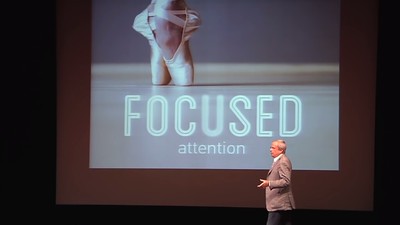
In this ‘room’ you are going to try Getting Things Done (GTD).
STEP 1: MAKE A LIST
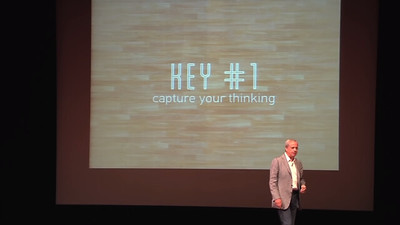
- Thing 1
- Thing 2
- Thing 3
- Thing 4
- Thing 5
- Thing 6
- Thing 7
- Thing 8
- Thing 9
STEP 2: NOTICE WHAT YOU NOTICED
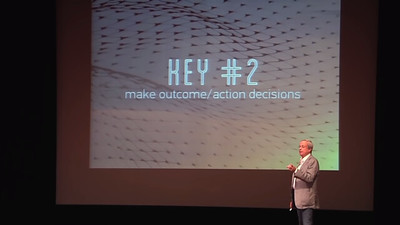
- Thing 3
- Thing 5
- Thing 8
- Thing 1
- Thing 2
- Thing 4
- Thing 6
- Thing 7
- Thing 9
STEP 3: SET A TIMER

- Set a timer for your first task
- Decide how long you think it will take before you start
- Start working
- Repeat this process for 45 minutes for as many tasks as you can complete, then take a 15-minute break
- Get up and get a drink of water
- Get up and go for a walk
- Every 20 minute blink your eyes 20 times while looking at least 20 feet away
- This is good for your eyes
Start steps 1 through 3 again, repeat for your school day
OUTSIDE (PRODUCTIVITY & THE BRAIN)

- Set a timer
- Spend up to 20 minutes in this ‘room’
- Watch the first 30 seconds of this Oct. 2020 interview with David Allen
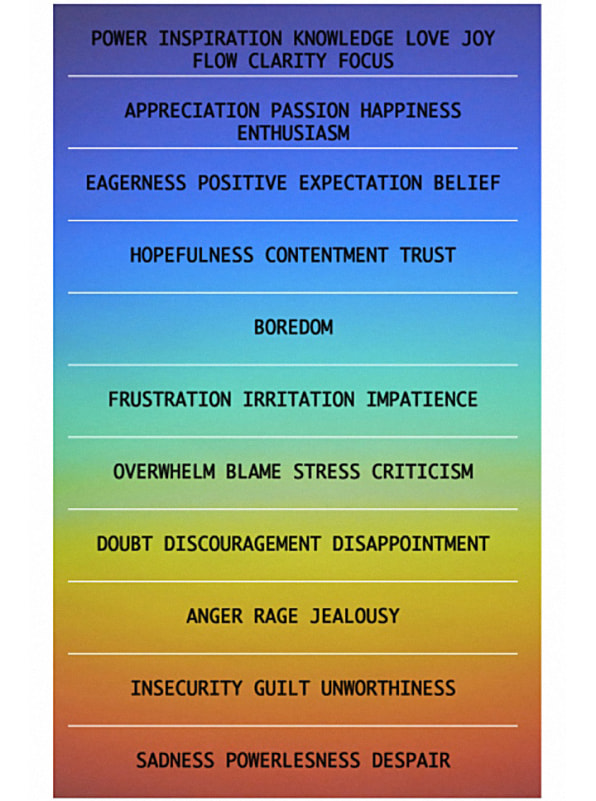
- Reflect on GTD and getting to the top of the colorful list above for a minute
- How can the GTD process help you tame the crazy-busy dragon of modern life?
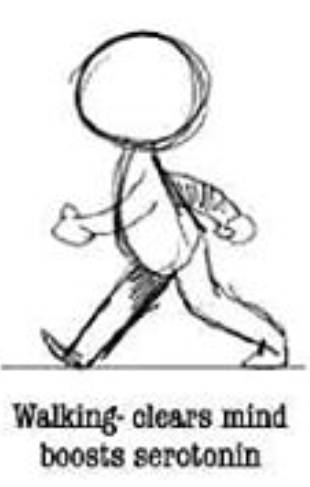
- Then, go for a 15-minute walk, if it is safe to do so
- Write a few sentence reflection
- DELETE ALL OF MR. LE DUC’s INSTRUCTIONS, AFTER YOU ARE DONE
OPTIONAL EXERCISE – Literally, read the article and go for another walk 

“I coach C-suite executives and rising stars from the earliest startups to Fortune 100 companies. My passion is to help ambitious leaders achieve their full human potential.” – Read more about Katia…
- Set a timer
- Spend up to 15 minutes reading…
- FastCompany Magazine article about Katia Verresen’s techniques and GTD, https://www.fastcompany.com/3026827/the-brain-hacks-top-founders-use-to-get-the-job-done
- Then, go for another 15-minute walk, if it is safe to do so
- DELETE ALL OF MR. LE DUC’s INSTRUCTIONS, AFTER YOU ARE DONE
WHAT I LEARNED and PROBLEMS I SOLVED
- Write only a few sentences of WHAT YOU LEARNED
- In one or two sentences, describe a PROBLEM YOU SOLVED
- DELETE ALL OF MR. LE DUC’s INSTRUCTIONS, AFTER YOU ARE DONE
WEEKLY ACTIVITY EVALUATION
- Give feedback on this week’s class Content and Process
- Fill in the Weekly Activity Evaluation
- DELETE THIS WHOLE SECTION, AFTER YOU ARE DONE
